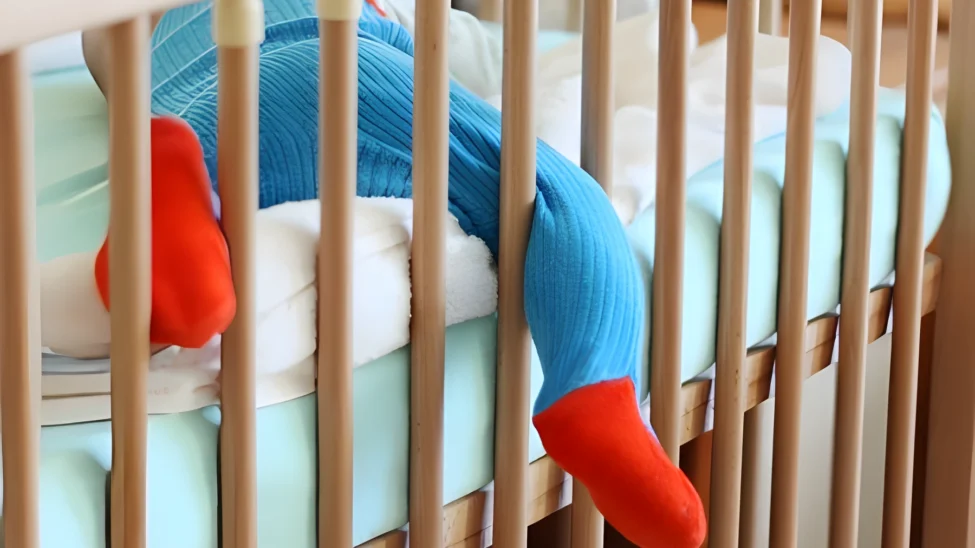
Safety Isn’t Just a Sticker on the Box
When I was pregnant with my son, I thought choosing a crib would be about colors and shapes. But once I dived in, I realized it was mostly about acronyms—ASTM, JPMA, CPSC—and a sense that if I chose wrong, it could actually be dangerous.
That was the moment I switched gears. I stopped browsing catalogs and started reading safety documents, talking to other moms, and pestering pediatricians. And it wasn’t out of paranoia—it was because every crib on the market claimed to be “safe,” but that word can mean wildly different things.
There is no universal safety magic wand. The word “safe” on packaging only makes sense when backed by the right certification.
I want to break down what those labels and standards actually mean so that when you choose a crib, you’re not guessing—you’re choosing confidently.
Decoding the Labels: Certifications That Count
Let’s be honest—many crib certifications sound like alphabet soup. But they aren’t all equal. Some mean rigorous testing and compliance, others are more of a marketing move. Here are the main ones that actually matter and why:
- CPSC (Consumer Product Safety Commission): This is the federal standard in the U.S. Every crib sold must comply with it. It covers slat distance, paint safety, structural integrity, and more.
- ASTM International: These voluntary standards often go a step further than CPSC. A crib marked as ASTM-compliant means it’s been tested for additional safety criteria, like hardware durability over time.
- JPMA (Juvenile Products Manufacturers Association): If you see their seal, it means the crib passed third-party testing for both ASTM and CPSC requirements. It’s like an extra vote of confidence.
What surprised me most? Some cribs technically meet legal standards but don’t go beyond. Others go the extra mile, but hide that behind bland packaging. You have to be curious, ask questions, and even dig into the manual.
Don’t confuse “stylish” or “popular” with “safe.” A $100 crib with full certification is better than a $900 one that just looks good on Instagram.
The Standards Behind the Labels
So what do these certifications actually test for? More than you’d think. Beyond obvious risks like lead paint or splintering wood, they look at how stable the frame is, how easily parts come loose over time, and how the crib responds to pressure and movement.
For example, ASTM standards check that no part of the crib can trap a baby’s head or limbs. JPMA testing involves simulated use over time, mimicking how babies (and curious siblings) treat their beds as jungle gyms. And CPSC updates its standards regularly based on real-life injury reports.
But here’s the kicker—no certification can guarantee zero risk. You still have to set it up right, check hardware regularly, and use the mattress that actually fits that model.
Safety is ongoing. A certified crib becomes unsafe the moment a missing screw or makeshift mattress enters the picture.
Things I Learned the Hard Way
When I chose a crib for my son, I initially picked one that looked minimal and pretty. It had good reviews and was popular in parenting groups. But when I tried to assemble it, I realized something was off. The instructions were vague, and it wobbled even when tightened.
I returned it and went back to the drawing board. This time, I filtered cribs by certification, not by rating. I ended up with a solid, JPMA-certified crib that wasn’t the most Instagrammable, but it felt stable and fit our space perfectly. Two years later, it’s still in perfect shape—and I’ve passed it on to my sister for her baby.
The best baby gear choices are the ones you don’t have to second-guess at 3 a.m. during a diaper change.
Also, don’t be shy about writing to a brand. I once emailed a company about a crib that didn’t list any certifications on the box. They replied within a day with all the documents I needed. If they hadn’t, I would’ve skipped them.
Safe Doesn’t Mean Complicated
Choosing a safe crib doesn’t have to be overwhelming. Yes, the labels matter—but so does your gut. Look for clarity, not perfection. If something seems too vague, ask. If the brand is transparent and meets known safety benchmarks, you’re already ahead.
No one expects you to become a product safety expert overnight. But a few extra minutes spent checking those labels can mean months of peaceful sleep—for both your baby and your peace of mind.
And remember: safe doesn’t mean boring. It just means smart. You’re building a tiny world for your child—and it starts with a crib that holds up in every way.
Sleep starts with safety. And safety starts with questions—the kind you’re totally allowed to ask, no matter how simple they sound.


